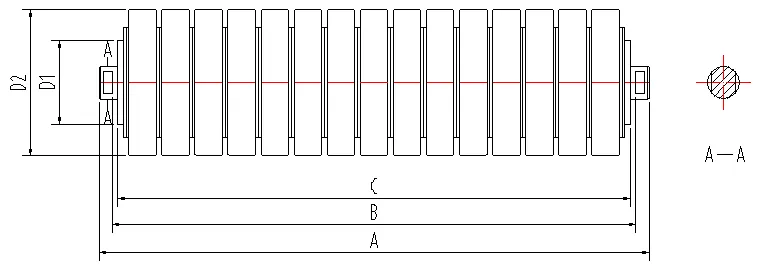 Afrikaans
Afrikaans  Albanian
Albanian  Amharic
Amharic  Arabic
Arabic  Armenian
Armenian  Azerbaijani
Azerbaijani  Basque
Basque  Belarusian
Belarusian  Bengali
Bengali  Bosnian
Bosnian  Bulgarian
Bulgarian  Catalan
Catalan  Cebuano
Cebuano  Corsican
Corsican  Croatian
Croatian  Czech
Czech  Danish
Danish  Dutch
Dutch  English
English  Esperanto
Esperanto  Estonian
Estonian  Finnish
Finnish  French
French  Frisian
Frisian  Galician
Galician  Georgian
Georgian  German
German  Greek
Greek  Gujarati
Gujarati  Haitian Creole
Haitian Creole  hausa
hausa  hawaiian
hawaiian  Hebrew
Hebrew  Hindi
Hindi  Miao
Miao  Hungarian
Hungarian  Icelandic
Icelandic  igbo
igbo  Indonesian
Indonesian  irish
irish  Italian
Italian  Japanese
Japanese  Javanese
Javanese  Kannada
Kannada  kazakh
kazakh  Khmer
Khmer  Rwandese
Rwandese  Korean
Korean  Kurdish
Kurdish  Kyrgyz
Kyrgyz  Lao
Lao  Latin
Latin  Latvian
Latvian  Lithuanian
Lithuanian  Luxembourgish
Luxembourgish  Macedonian
Macedonian  Malgashi
Malgashi  Malay
Malay  Malayalam
Malayalam  Maltese
Maltese  Maori
Maori  Marathi
Marathi  Mongolian
Mongolian  Myanmar
Myanmar  Nepali
Nepali  Norwegian
Norwegian  Norwegian
Norwegian  Occitan
Occitan  Pashto
Pashto  Persian
Persian  Polish
Polish  Portuguese
Portuguese  Punjabi
Punjabi  Romanian
Romanian  Russian
Russian  Samoan
Samoan  Scottish Gaelic
Scottish Gaelic  Serbian
Serbian  Sesotho
Sesotho  Shona
Shona  Sindhi
Sindhi  Sinhala
Sinhala  Slovak
Slovak  Slovenian
Slovenian  Somali
Somali  Spanish
Spanish  Sundanese
Sundanese  Swahili
Swahili  Swedish
Swedish  Tagalog
Tagalog  Tajik
Tajik  Tamil
Tamil  Tatar
Tatar  Telugu
Telugu  Thai
Thai  Turkish
Turkish  Turkmen
Turkmen  Ukrainian
Ukrainian  Urdu
Urdu  Uighur
Uighur  Uzbek
Uzbek  Vietnamese
Vietnamese  Welsh
Welsh  Bantu
Bantu  Yiddish
Yiddish  Yoruba
Yoruba  Zulu
Zulu Head and Tail Pulleys for Efficient Material Handling Systems
The Function and Importance of Head and Tail Pulleys
The Function and Importance of Head and Tail Pulleys
The head pulley, located at the discharge end of a conveyor, is the driving force behind the movement of the conveyor belt. Often powered by a motor, it pulls the belt along its path, enabling it to transport materials from one point to another. The head pulley not only imparts motion but also influences the material transfer efficiency. Its design often includes grooves that provide better traction for the belt, preventing slippage and ensuring a consistent flow of materials. This is crucial in settings that require precision and reliability, such as mining, manufacturing, and bulk material handling.
head pulley tail pulley

On the other hand, the tail pulley is situated at the loading end of the conveyor. It serves several functions, most notably maintaining tension in the conveyor belt. This tension is essential for the belt’s proper functioning, preventing sagging and ensuring it remains within its designated path. The tail pulley also supports the weight of the loaded belt, distributing it evenly and reducing wear and tear on both the belt and the system components. Additionally, the tail pulley contributes to the installation of the conveyor system, as it helps to guide the belt back to the head pulley in a closed-loop configuration.
Both head and tail pulleys must be constructed from durable materials to withstand constant stress and friction. Maintenance of these components is crucial to ensure the longevity and efficiency of the entire conveyor system. Regular inspections and timely replacements can prevent downtime and costly repairs, making it essential for operators to understand the significance of these pulleys.
In summary, head and tail pulleys are indispensable in the operation of conveyor systems. The head pulley drives the movement and enhances material transfer efficiency, while the tail pulley maintains tension and supports the system’s integrity. Together, they ensure that materials are moved reliably and efficiently in various industrial applications. Understanding their roles not only highlights their importance but also underscores the necessity of proper maintenance for the seamless operation of conveyor systems. Thus, investing in quality components and regular upkeep can lead to enhanced productivity and reduced operational costs.
-
Revolutionizing Conveyor Reliability with Advanced Rubber Lagging PulleysNewsJul.22,2025
-
Powering Precision and Durability with Expert Manufacturers of Conveyor ComponentsNewsJul.22,2025
-
Optimizing Conveyor Systems with Advanced Conveyor AccessoriesNewsJul.22,2025
-
Maximize Conveyor Efficiency with Quality Conveyor Idler PulleysNewsJul.22,2025
-
Future-Proof Your Conveyor System with High-Performance Polyurethane RollerNewsJul.22,2025
-
Driving Efficiency Forward with Quality Idlers and RollersNewsJul.22,2025





























